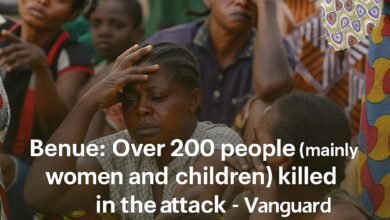Measles Resurgence in North America: Over 1,000 U.S. Cases Raise Alarm in 2025

The United States has surpassed a troubling milestone: 1,001 confirmed measles cases as of May 8, 2025, spread across 31 jurisdictions, marking the highest tally in decades and signaling an urgent public health crisis in a disease once considered eliminated from the country.
The Epicenter: West Texas Outbreak
Texas remains the hardest-hit state with 709 confirmed cases spread across 29 counties, particularly concentrated in Gaines County, where a close-knit and undervaccinated Mennonite community has seen over 403 cases, affecting roughly 1.7% of the local population. While the outbreak appears to be slowing, two children under age 10 have died from measles complications in Texas since late February, including one from measles pulmonary failure.
Other Active Outbreaks Across the U.S.
The CDC defines an outbreak as three or more connected cases. In addition to Texas, active outbreaks are currently ongoing in:
-
Indiana (8 cases, all in Allen County)
-
Michigan (9 cases; 4 linked to Ontario)
-
Montana (8 cases; first since 1990s, in Gallatin County)
-
Ohio (34 cases; outbreaks in Ashtabula and Knox Counties)
-
Pennsylvania (15 cases, with 8 in Erie County)
-
Tennessee (6 cases; mid-state cluster)
Other states with confirmed cases but no active outbreak include California, Florida, Georgia, Maryland, New Jersey, New York City and State, Washington, among others.
Regional Spread Across North America
The crisis is not limited to the U.S. In neighboring Ontario, Canada, over 1,440 measles cases have been reported since October 2024, with nearly 200 cases added in the past week alone. In Chihuahua, Mexico, there are 1,041 confirmed cases and one death to date. Notably, all these outbreaks share the same measles strain, indicating interregional transmission.
Outbreak Linkages and Travel-Related Spread
Many U.S. outbreaks have been traced to unvaccinated individuals who contracted measles abroad and returned home, sparking community transmission in areas with low vaccination coverage. In Ohio and Michigan, for instance, multiple cases are linked to travelers from Ontario.
In North Dakota, nine cases were confirmed — all in Williams County — including a cluster within local schools, sparking fears of sustained community transmission for the first time since 2011.
A Preventable Crisis: The Role of Vaccination
Measles is one of the most contagious viruses known to science, capable of lingering in the air for up to two hours after an infected person coughs or sneezes. It is entirely preventable with the MMR vaccine (Measles, Mumps, Rubella).
The CDC recommends:
-
1st dose: Between 12–15 months
-
2nd dose: Between 4–6 years
Communities with vaccination rates above 95% benefit from herd immunity, significantly reducing the risk of widespread transmission. However, vaccination rates in many U.S. states have declined since the COVID-19 pandemic, and the number of parents claiming religious or philosophical exemptions has increased.
In some affected communities — including those in Texas and parts of Pennsylvania and Ohio — vaccine coverage is well below the threshold, creating fertile ground for outbreaks.
What Are the Symptoms of Measles?
Measles typically begins with:
-
High fever
-
Cough
-
Runny nose
-
Red, watery eyes
A rash follows 3–5 days later, starting on the face and spreading downward. In severe cases, complications include:
-
Pneumonia
-
Brain swelling (encephalitis)
-
Blindness
-
Death
While most children recover, unvaccinated individuals are 20 times more likely to experience complications.
Treatment and Response
There is no specific antiviral treatment for measles. Care focuses on:
-
Managing fever and hydration
-
Treating secondary infections
-
Monitoring for complications
Hospitals across outbreak zones have increased public health alerts, issued quarantine recommendations, and encouraged community-wide vaccination campaigns.
The CDC has also deployed rapid response teams, including epidemiologists and immunization experts, to outbreak areas like Texas, Montana, and Ohio to contain spread and conduct contact tracing.
Public Health Warnings and Lessons
As three people in North America have died from measles-related complications in 2025 — two children in Texas and one adult in New Mexico — health officials are urgently calling on Americans to check their vaccination records and update their MMR shots, especially in undervaccinated communities.
“Measles is not a benign childhood illness. It is deadly, preventable, and spreading fast. The key to ending this outbreak is vaccination,” said CDC Director Dr. Mandy Cohen.
With only 69% of measles cases tied to outbreaks in 2024, the jump to 93% in 2025 reflects the role of cluster transmission — especially in insular, under vaccinated communities.
The situation remains fluid. Though some hotspots — such as West Texas — are reporting fewer new cases, health experts warn that as long as vaccination rates remain low, measles will continue to find footholds.
The 2025 outbreak, now larger than that of 2019, may jeopardize the United States’ elimination status once again. Rebuilding vaccine confidence and restoring high immunization coverage must be a national priority to avert further loss of life.





